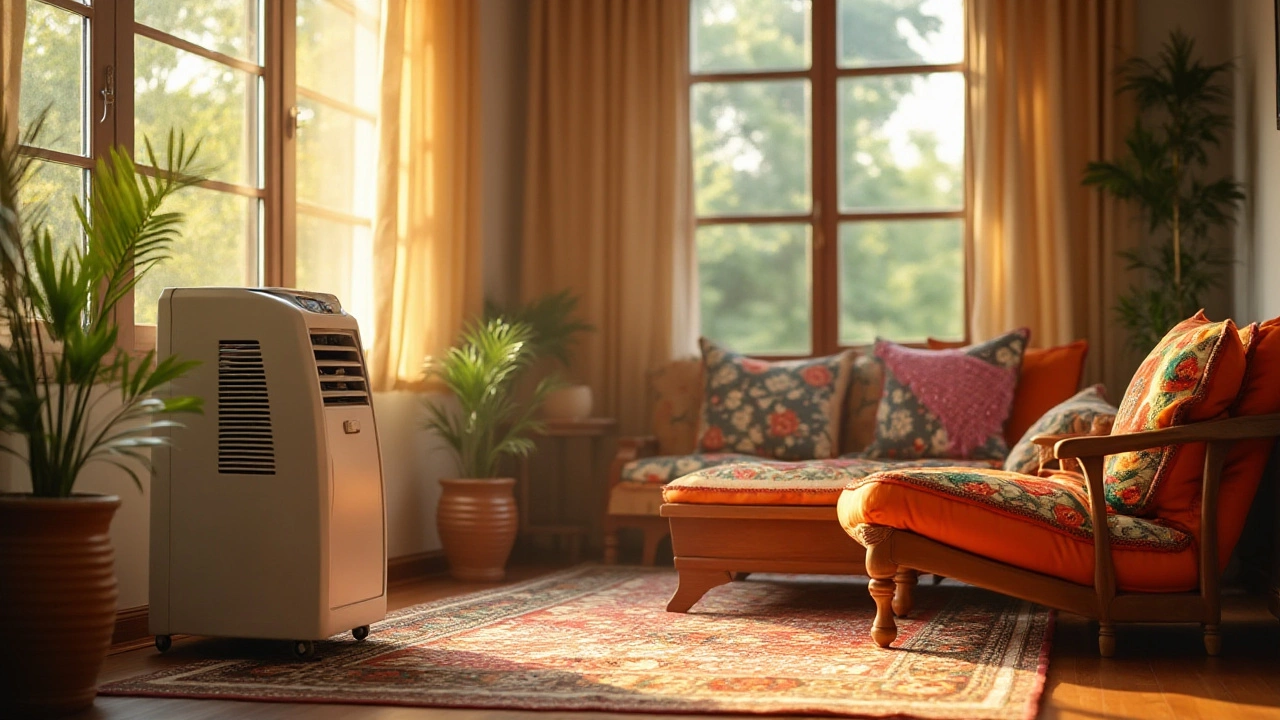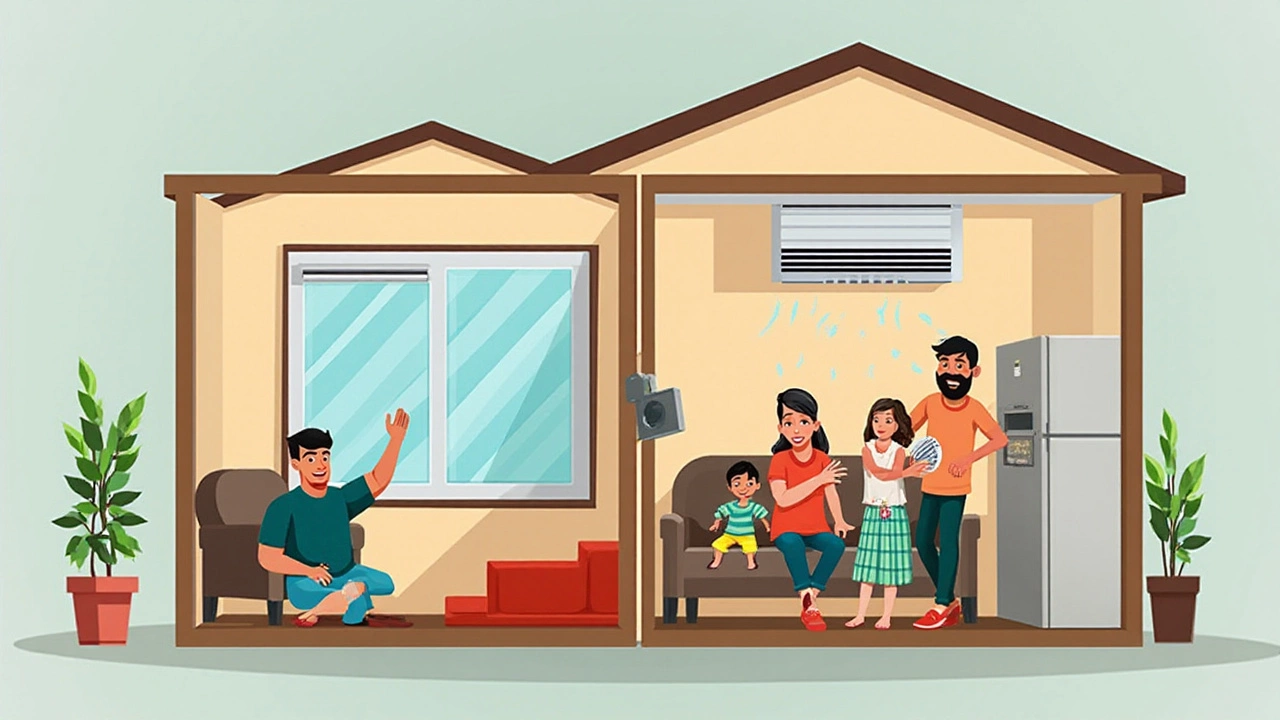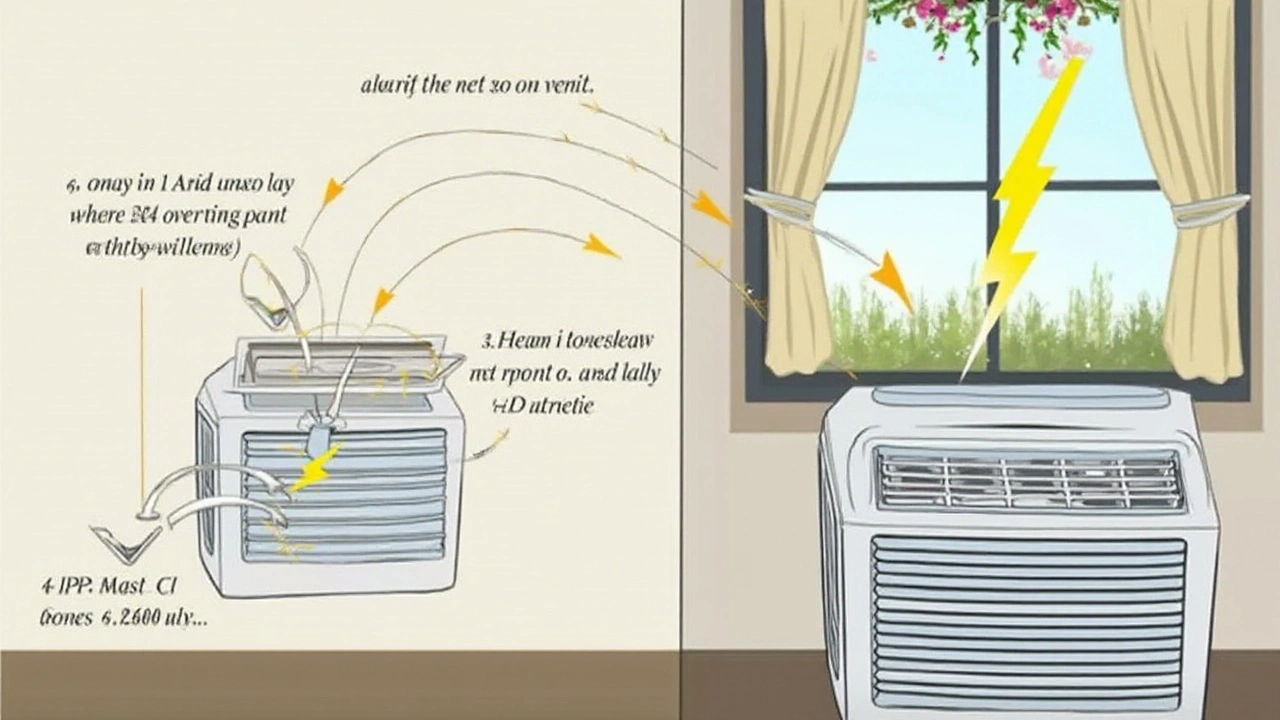
Portable air conditioners have surged in popularity as convenient solutions for beating the heat, especially in spaces where traditional air conditioning units aren't feasible. But a common question lingers: "What happens if you don't vent a portable AC outside?" The answer isn't just about temperature levels; it impacts energy consumption, indoor air quality, and even the lifespan of the unit itself.
This article sets out to unravel these curious details for those considering or already using a portable AC. We will dive into the very fabric of why venting is essential, explore what risks you might face if ignored, and provide some handy tips on getting your system working at its peak performance. So, whether you're new to portable ACs or a seasoned user, understanding these insights can enhance your cooling experience considerably.
- Understanding Portable Air Conditioners
- Importance of Proper Venting
- Consequences of Not Venting
- Tips for Optimal Venting
- Alternative Venting Solutions
Understanding Portable Air Conditioners
When it comes to battling the stifling heat of summer, portable ACs serve as handy and versatile companions. These compact units offer a reprieve from heat without the need for permanent installation, making them ideal for apartments or areas where window units just aren't feasible. The appeal lies in their portability; you can easily move them from room to room, targeting the spaces that need cooling the most. However, there's more beneath their sleek exteriors than meets the eye.
At the heart of each portable air conditioner is a refrigerant system similar to that found in full-sized models. They absorb heat from the indoor air and expel it outside, often using a hose vented through a window. The cooling process involves a series of consistent cycles—drawing warm air in, cooling it, and blowing it back out into the room, while simultaneously removing heat from the air and moisture, which is often collected in a removable container. Most units also function as dehumidifiers, a crucial feature that enhances comfort in sticky, humid conditions.
How Portable Air Conditioners Work
Understanding the inner workings of a portable AC is essential for maximizing its efficiency. These appliances rely on an inbuilt compressor, condenser, and evaporator coil to move air through the system. Here’s a simple breakdown: the unit pulls in warm room air, the refrigerant inside the evaporator coil absorbs the heat, cooling the air. As the air cools, it passes back into the room, and the heat absorbed by the refrigerant is directed out of the space through an exhaust host. This cycle keeps your living space refreshingly cool.
“The key to maximizing the efficiency of your portable air conditioner is to ensure it’s properly sized for the space and correctly vented,” says a report from Energy Efficiency Insider. “Without these benchmarks, users may find themselves facing high electricity bills and uneven cooling.”
Size does matter when choosing a portable air conditioner. British Thermal Units (BTUs) measure the capacity of a unit to remove heat. For instance, a unit with 8,000 BTU is ideal for cooling small rooms under 200 square feet, while spaces nearing 500 square feet typically require a 14,000 BTU unit. It's imperative to match the BTU to your room size. An underpowered unit will struggle to cool the space effectively, whereas an overpowered unit can cycle on and off too frequently, wasting energy.
Advent of Smart Portable Air Conditioners
In the modern age, advancements in technology have revolutionized the functionality of portable air conditioners. Many models now boast smart technology capabilities, allowing users to control their units via smartphones or home automation systems. This feature is particularly beneficial if you want to lower the heat before arriving home, using just the tap of a finger on a dedicated app. The integrated smart features sometimes include energy efficiency settings that adjust output based on room conditions, saving both power and costs.
| BTU Rating | Room Size (sqft) | Power Consumption (Watts) |
|---|---|---|
| 8,000 | Up to 200 | 940 |
| 12,000 | 300 - 400 | 1,250 |
| 14,000 | 400 - 500 | 1,500 |
Awareness of these components helps in maintaining and choosing the right portable AC for your needs. A good grasp of their functionality can also help troubleshoot basic problems without callings for professional assistance. In this exploration, we're starting to scratch the surface of why venting matters to keep these powerful little machines working at their best, ensuring every room you enter feels like a cool, refreshing haven.
Importance of Proper Venting
Venting is critical when using a portable AC because it directly impacts how efficiently the unit can cool down a room. Without venting, the hot air that the air conditioner extracts from the room has nowhere to go. It gets reintroduced back into the space, undermining the cooling process altogether. Essentially, a portable AC without a vent is like a treadmill on an uphill sprint; it will generate its own unhealthy indoor weather, making the machine overwork and dissipate cooling power.
A key function of the venting process is to improve the cooling efficiency of the air conditioner. By directing hot air out, you maximize the room's drop in temperature, enabling the system to maintain a comfortable environment even in scorching heat. More than just a question of comfort, it is also about energy efficiency. An inadequately vented system can potentially double your energy bills because it will stay on longer, trying to achieve the desired room temperature. According to the U.S. Department of Energy, efficient venting contributes significantly to reducing energy consumption, helping to ease both your conscience and your bank account.
"Portable air conditioners are effective only if their hoses—which emit warm air—are properly vented outdoors," says Kirsten Holt, an energy conservation expert.
Proper venting is not just a one-size-fits-all concept, however. You must consider the specific type of room where you're installing the unit, for instance. Venting kits usually have adjustable panels or other solutions that fit different types of windows, contributing to a unique setup process each time. Flexible options, like slider kits for sliding windows, are available and make all the difference in achieving a controlled climate efficiently.
Steps for Setting Up Venting
- Determine the best window or outlet for venting the hot air out, ensuring minimal bends in the hose for optimal air movement.
- Install a venting kit, making sure that it fits well in the window frame or any other designated opening.
- Avoid any sharp bends in the exhaust hose to discourage blockages, making sure that the length is kept to a minimum.
- Secure everything in place, preventing unintended shifts from closing off airflow during the AC’s use.
- Regularly ensure that the connected components are not compromised and are functioning as intended. Any minor disturbances can greatly reduce efficiency.
Neglecting these aspects may invite additional complexities, such as increased moisture levels leading to mold growth, an unwanted bonus when venting is inadequately handled. This presents not just an annoyance but a potential threat to your health and quality of life. Therefore, investing time in setting up the venting system properly is synonymous with investing in a more breathable and healthier living environment.

Consequences of Not Venting
When thinking about a portable AC, venting might seem like an optional step. The reality, however, paints a different picture. If a portable AC unit isn't vented correctly, you could encounter several unpleasant consequences that undermine the very convenience you sought. One primary issue revolves around the cooling efficiency. Portable ACs function by extracting warm air from the room, cooling it, and then expelling the hot air outside. Without proper venting, the hot air recirculates within the space, somewhat like chasing your tail, never fully achieving that crisp breeze you're longing for.
This containment of hot air impacts your electricity bill significantly. As your system struggles and labors to maintain the ideal room temperature, it draws more power, causing a spike in energy costs. What was once a cost-effective cooling method now becomes an untenable expense. Not to mention the prolonged stress on your unit that could shorten its operational life. Round-the-clock cooling attempts convert a breezy solution into a costly, perpetual burden.
Ventless operations also degrade indoor air quality. Since the portable AC cannot efficiently expel excess moisture and heat, rooms become stuffy, clammy, and uncomfortable. This environment accumulates moisture, promoting mold growth and adding to the mustiness. Respiratory issues can creep up uninvited, particularly for those sensitive to air quality changes. An unvented workaround fosters a closed-loop that turns refreshing air into a breeding ground for allergens.
Finally, safety is a less talked-about but crucial factor. The heat exchange process within the unit depends significantly on venting. Sealed space negates this process, increasing the chances of overheating, leading to mechanical failures or worse. However, understanding these risks underscores why compliance with the instructions isn't just a matter of habit, but of necessity. Speaking on this subject, the respected home energy expert Dana Smith once remarked,
"A poorly vented portable AC is not just a cooling faux pas; it's a ripple that turns small problems into household headaches."
If you're using your portable AC without proper venting, taking a step back to reassess could save time and resources. Addressing venting problems doesn't only promise comfort but bolsters the longevity and efficacy of your air conditioning system. In short, vent wisely, live comfortably.
Tips for Optimal Venting
When it comes to getting the most out of your portable AC, ensuring proper venting is crucial. Incorrect venting isn't just about losing a few degrees of coolness; it's about harnessing the full power of your cooling unit and ensuring you're not inadvertently raising your energy bills. To start, you want to make sure the exhaust hose is as short as possible and free from bends that can restrict airflow. The path of air should resemble a highway, free of traffic jams that can slow down the movement of hot air exiting your room. Using a shorter and straighter hose helps minimize pressure on the AC unit, allowing it to work smoothly and efficiently over a longer period.
Placement plays a role so significant that overlooking it could be the difference between a relaxing cool breeze and a sweltering living space. It's important to position your portable AC near a window or another outlet where the exhausted hot air can leave the room effectively. Sometimes overlooked is the window kit installation; these kits aren't just accessories but essential components that facilitate proper venting. Setting it up tightly protects against the infiltration of the warm outside air back into the room, eliminating energy waste. Weatherstripping is a good addition too, sealing gaps that might unseen let warm air get back in. Remember, a well-vented AC utilizes energy smarter and maintains a consistent interior environment.
According to HVAC expert Dr. James Olsen, "Proper venting shouldn't be an afterthought. The quality of your AC experience is tied heavily to how you've managed the venting setup. Commitment to getting it right pays off in sustained cooling comfort and optimized energy use."
Another golden tip is to regularly check and clean your portable air conditioner's filters. Over time, dust and debris can accumulate, hampering the efficiency of the unit. Monthly filter checks and cleaning sessions are pivotal, particularly during active usage seasons. Working with a clean filter not only improves breathability in your space but ensures that the AC isn’t over-exerting itself to achieve the desired temperature. Also, inspect the exhaust hose connection points for loose fittings or small cracks, as these can also lead to inefficiencies by letting warm air escape before it exits the room properly.
If you reside in exceptionally humid climates, it may be beneficial to incorporate additional tools such as a dehumidifier. Portable ACs can struggle to manage overwhelming moisture levels, which adds to the system's load. Pairing with a dehumidifier can lighten this burden, allowing the AC to focus on cooling while the dehumidifier tackles excess moisture. Strategically deploying such complementary devices can fine-tune control over your indoor climate, vastly improving comfort and energy efficiency. Knowledge of these nuances in venting can transform your living space into a haven of comfort without the worry of inefficient operations or unexpected utility costs.
Considering Alternative Venting Methods
Sometimes traditional venting solutions might not apply due to architectural constraints or aesthetic preferences. In these cases, exploring alternative venting options becomes necessary. Sliding door kits can accommodate homes where window venting isn't ideal, allowing adjustments without sacrificing functionality. Extending a hose to more discreet exits like vent shafts or drop ceilings can also be an option, but it requires thorough evaluation of building layouts. Staying informed about innovative setup adaptations could provide the flexibility you need without compromising cooling efficiency.

Alternative Venting Solutions
Sometimes, traditional venting just isn’t feasible. Maybe you're renting an apartment with rules against window installations, or perhaps your room design simply doesn't allow for a straightforward venting option. Whatever the reason, it's crucial to know there are alternative venting solutions so you can still ensure your portable AC operates efficiently. First, consider using sliding doors. The concept is similar to venting through a window, but instead of running the vent hose horizontally, you run it vertically. Many manufacturers offer kits designed specifically for sliding doors, allowing you to tailor the installation to your particular setup. Another potential method is drilling through the wall. While a more permanent solution, it offers the advantage of not blocking any windows or doors, and it provides a direct path for the exhaust air to escape outdoors.
For those living in specific conditions, such as high-rise buildings with specific regulations, creating a faux vent system might be an intriguing option. This involves setting up an interior venting system that routes the exhaust towards a nearby window or a small high-powered fan to aid the air’s exit. These are elaborate setups that require some ingenuity but can be effective under the right circumstances. One essential approach is ensuring no warm air leaks back into the room. The seal around the vent hose is vital in such alternative methods, as improper seals can make the entire effort useless by letting the hot air mix back with the cool air the unit is working so hard to produce.
Subtle Adjustments for Performance Optimization
To optimize these methods, it's good practice to routinely check all connections, ensuring they haven’t loosened due to vibrations. An overlooked but effective technique is using thermal curtains to keep the room cool. These curtains block out external heat while retaining the coolness achieved by your AC. Pair this with proper venting, and you create a cocoon of comfort within your living space. According to a report by the Energy Efficiency & Renewable Energy Agency, "strategic use of thermal barriers can help save up to 30% of energy consumption."
Another gear in the well-oiled machine for alternative venting solutions is making use of cooling efficiency boosting tools like heat-reflecting film over windows and additional insulation where necessary. These techniques can reduce the workload on your AC unit, ensuring it lasts longer while still maintaining a delightful climate in your room. Additionally, if the structural layout allows, try to vent through a nearby unused chimney or an air duct not connected to active systems. This helps channel the exhaust efficiently while meeting regulatory requirements. Using such existing structures can blend the alterations seamlessly into your dwelling.